From old stone spans to sweeping modern suspensions, bridges have a way of wowing us.
Moving bridges, stone bridges, new bridges, historic bridges, bridges that are global icons, bridges you’ve probably never heard of—they’re all here. We even have one that floats on water and another that carries water. Here are our choices for the 30 most impressive spans around the world.
Golden Gate Bridge
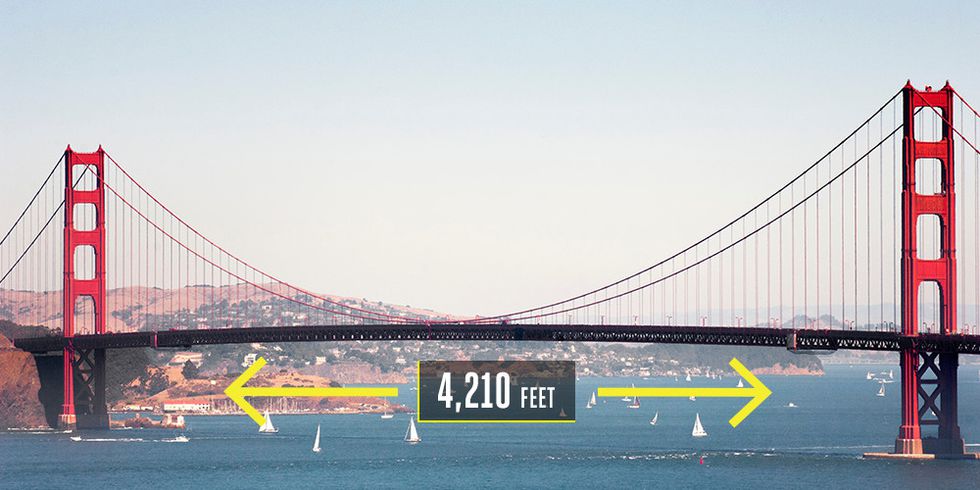
San Francisco, California
The four-year project to span the Golden Gate strait and connect San Francisco to Marin County culminated in what was the world’s longest (4,200 feet) and tallest suspension bridge when this Bay Area landmark opened in 1937. The Golden Gate would keep those records until the 1960s. The Joseph Strauss Art Deco suspension bridge design is famous today in large part because of something a bit out of the norm in the bridge world: color. Golden Gate was painted “International Orange” partly to match the warm coastal surroundings and also to stand out against the horizon for boaters.
From our partners:
Ponte Vecchio

Florence, Italy
You don’t walk over the Golden Gate Bridge expecting to find a market or a shopping mall up there. But centuries ago, it was common for shops and even houses to stand one the second story of a bridge. The most prominent example that still exists is probably Ponte Vecchio in Florence, Italy. Rebuilt after a flood in 1345, a 1565 upgrade added a second story to the stone segmental arch bridge spanning the Arno River. It was in the second story that workshops and houses filled the extra space, stretching sometimes wider than the original bridge. Ponte Vecchio is the only one of its kind in Florence that survived World War II.
Magdeburg Water Bridge
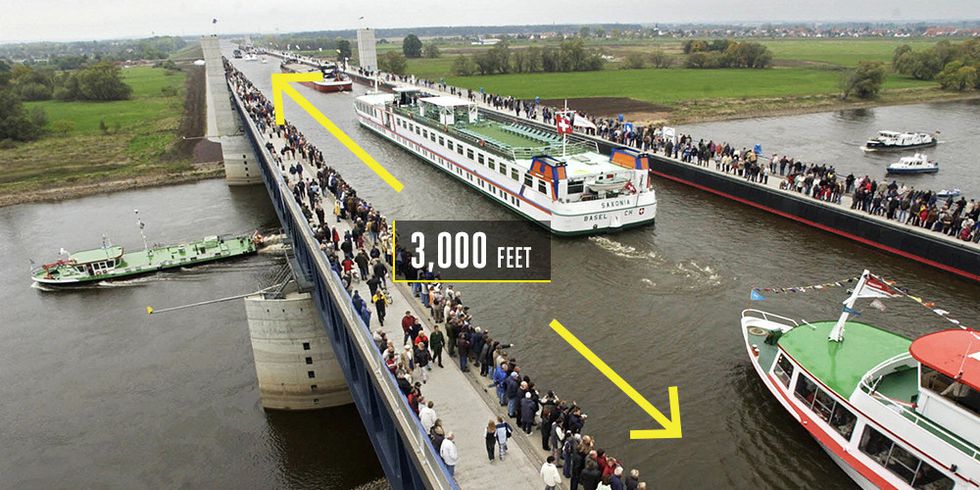
Magdeburg, Germany
The water bridge that crosses the Elbe River to connect the Elbe-Havel Canal to the Mittellandkanal becomes the longest navigable aqueduct in the world, at more than 3,000 feet long. Previously, connecting the two canals required a 7.4-mile detour and boat lift into the river. But in 2003 the new concrete water bridge near Berlin changed all that and gave ships a water-filled crossing.
Sydney Harbour Bridge
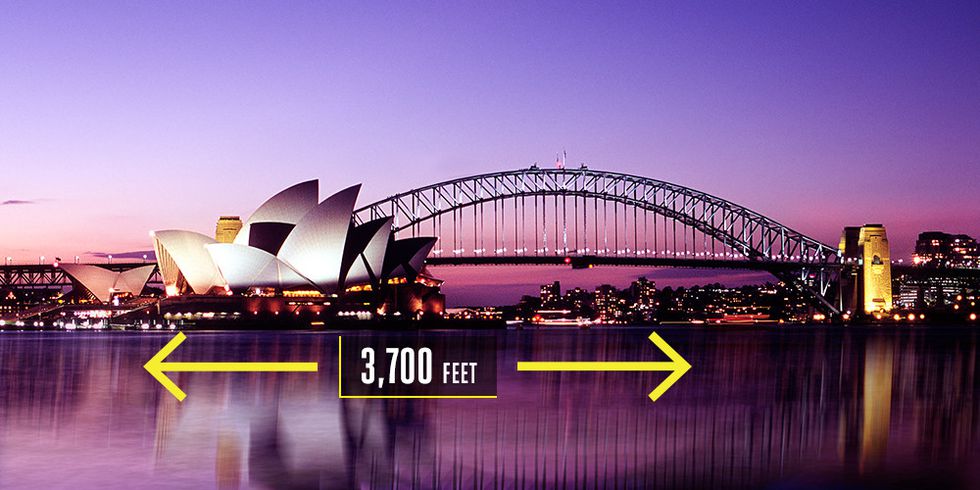
Sydney, Australia
The “Coathanger” of steel that crosses the Sydney Harbour has a longer history than it appears. Opened in 1932 after eight years of construction, the steel bridge features six million hand-driven rivets. The extreme sun in Sydney required hinges that could handle the steel expanding and contracting in the extreme temperatures. At 160 feet wide, the bridge was the widest long-span bridge in the world until 2012, and crosses over 3,700 feet with the steel arch 440 feet above the water.
Scale Lane Footbridge
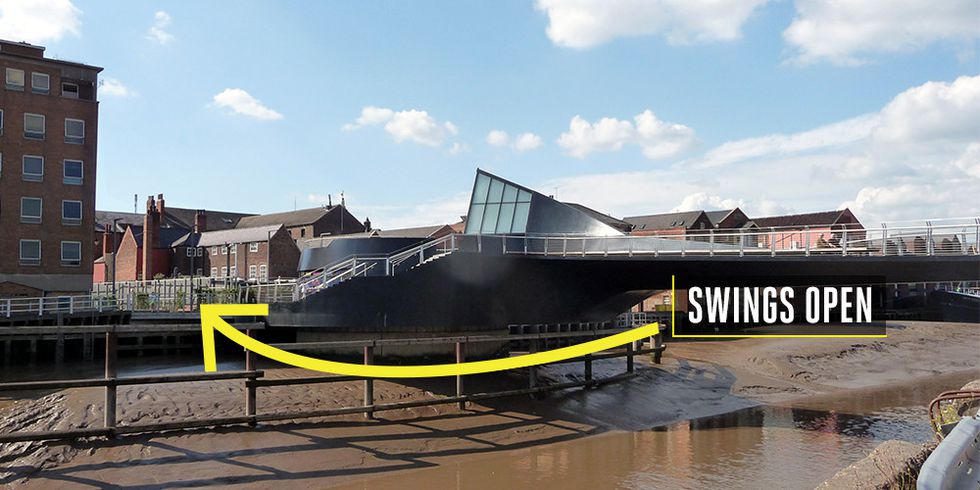
Hull, England
Pedestrians can have some fun in Hull, England, with a swinging pedestrian bridge in what some call the shape of an apostrophe. Designed by McDowell+Benedetti and opened in 2013, the black steel bridge serves as a crossing of the River Hull, but opens to river traffic in an impressive swinging motion.
Millau Viaduct
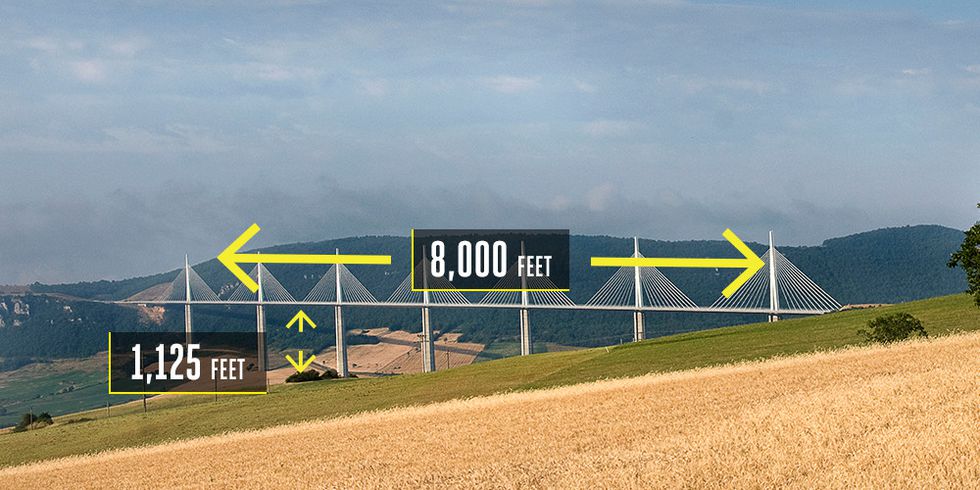
Millau, France
At 1,125 feet, the tallest bridge in the world opened in 2004 and can, at times, soar above the clouds. At over 8,000 feet long, Millau Viaduct spans the Tarn River Valley with seven pillars designed by Lord Norman Foster. To create the bridge in just three years, crews built the towers and then the roadway, which was slid into place atop the towers.
Brooklyn Bridge

New York City, New York
It may have taken 14 years to build, but when the Brooklyn Bridge opened in 1883 to connect Manhattan and Brooklyn, the single span of 1,595 feet suspended by four cables was a sight to behold. It still is. Designed by John A. Roebling and with the construction led by son Washington Roebling and his wife, Emily, the project stands as an enduring symbol for bridge construction the world over. It may have been the 1884 P.T. Barnum spectacle of leading a herd of 21 elephants across the bridge that early on cemented the bridge’s popularity. But today, from the 15-.5-inch diameter cables comprised of 5,434 parallel steel wires to the towers built of limestone, granite and cement, everything about the Brooklyn is iconic.
Akashi-Kaikyo Bridge
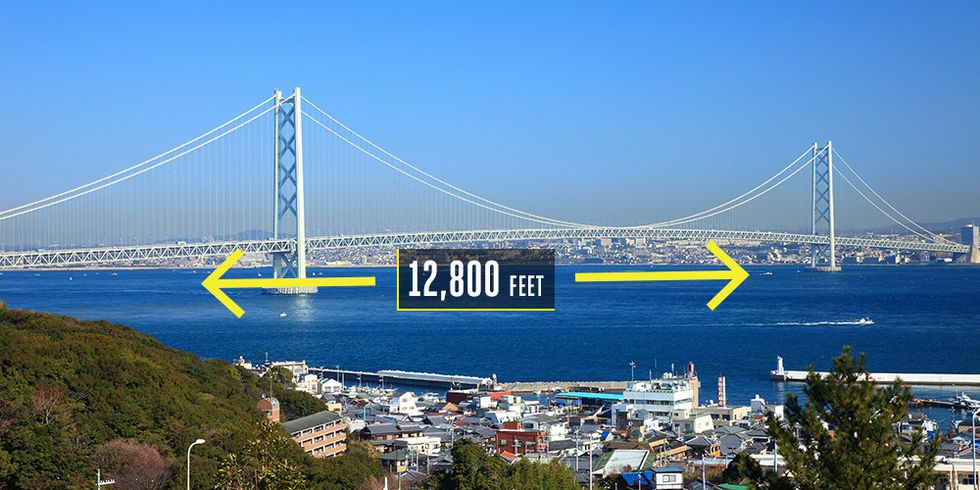
Kobe, Japan
The longest suspension bridge in the world measures 12,800 feet across. It opened in 1998 after 12 years of construction. The three-span bridge crosses the Akashi Strait with 190,000 miles of wire cabling the roadways from the two towers. Bridge design had to account for earthquakes, high winds, and harsh sea currents crashing against the towers.
Rialto Bridge
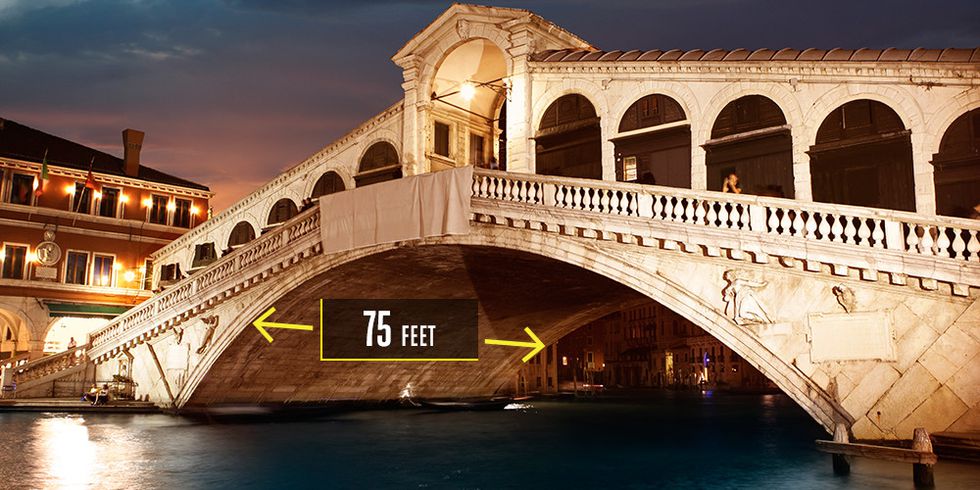
Venice, Italy
The first bridge to span the Grand Canals of Venice, this 15th Century structure by Antonio da Ponte defied the critics of the time and topped some steeped competition—even Michelangelo offered a design for the planned crossing. The peaked Venetian architecture allows for ship passage underneath. The design, which took three years to build, was created 24 feet high and 75 feet wide to allow space for shops along the sides.
Bay Bridge
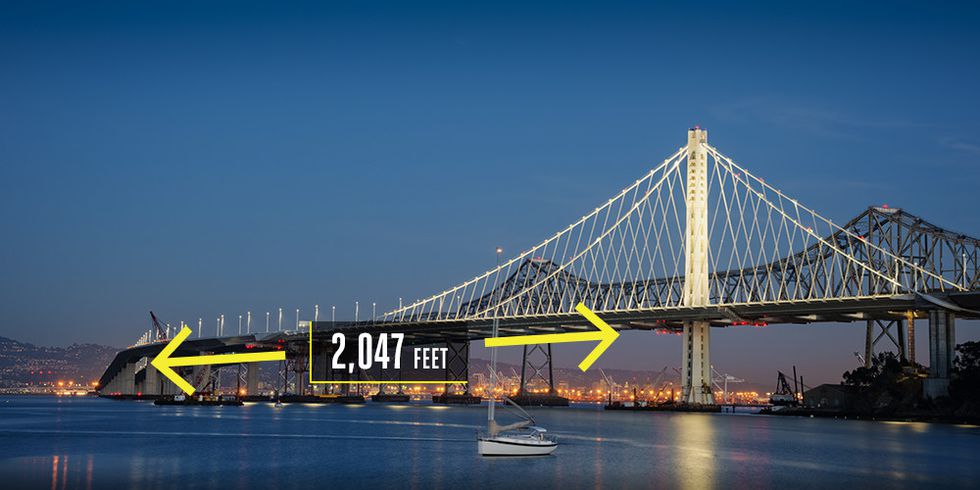
Oakland, California
The San Francisco Bay Area is lucky enough to have two internationally renowned bridges. The new Bay Bridge East Span, a $6.4 billion project, replaced a seismically unstable bridge. It has the world’s largest self-anchored suspension span, a 2,047-foot span anchored by a single 525-foot-tall tower that holds a single mile-long main cable containing 17,399 steel wire strands.
State Route 520 Floating Bridge
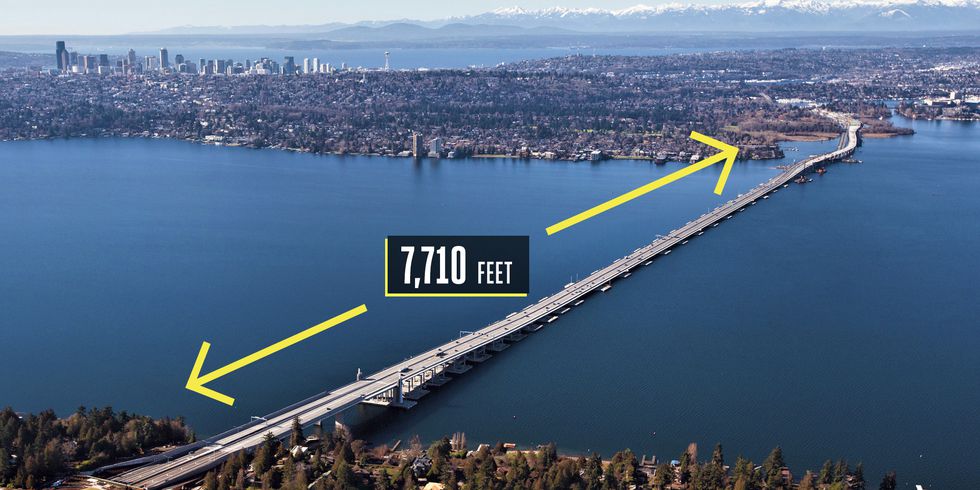
Seattle, Washington
The world’s longest floating bridge was upstaged in April 2016 when the brand-new State Route 520 Floating Bridge replaced it. The new span, which runs just a few feet to the north of the old Seattle bridge, spans 7,710 feet across Lake Washington and five vehicle lanes wide. The new bridge uses 77 concrete pontoons as the foundation; the weight of the water displaced by the pontoons equals the weight of the structure, allowing it to float. The roadway is elevated 20 feet above the water. A total of 58 anchors secure the bridge.
Pont Jacques Chaban-Delmas
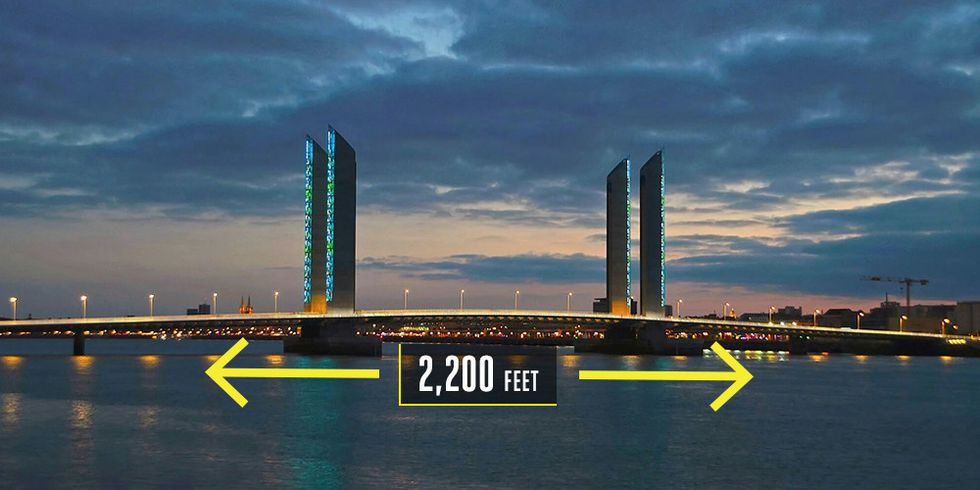
Bordeaux, France
The longest vertical-lift bridge in Europe, at 2,200 feet, has the architectural feat of lifting 252 feet over the Garonne River in Bordeaux, France. The four slender pylons that serve as the vehicle for the vertical lift will light up to signify the current tide—blue for high tide and green for low tide.
Helix Bridge
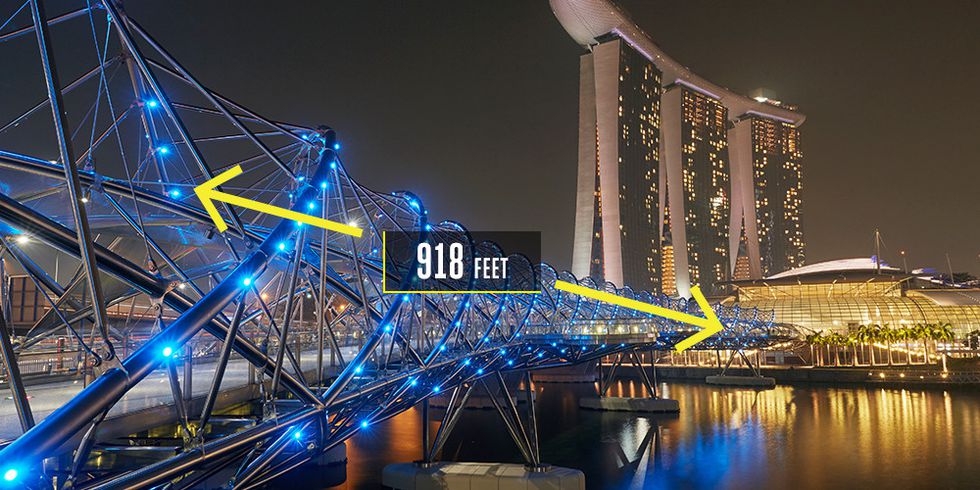
Singapore
Inspired by the shape of DNA, the Helix Bridge offers Singapore pedestrians 918 feet of architectural intrigue and artistic expression. The bridge in Marina Bay uses multiple styles of steel to curve and sweep, opening up at five points for viewing platforms. The steel tubes serve as the visual spectacle. If straightened and laid end to end, they would stretch 7,380 feet.
Nanpu Bridge
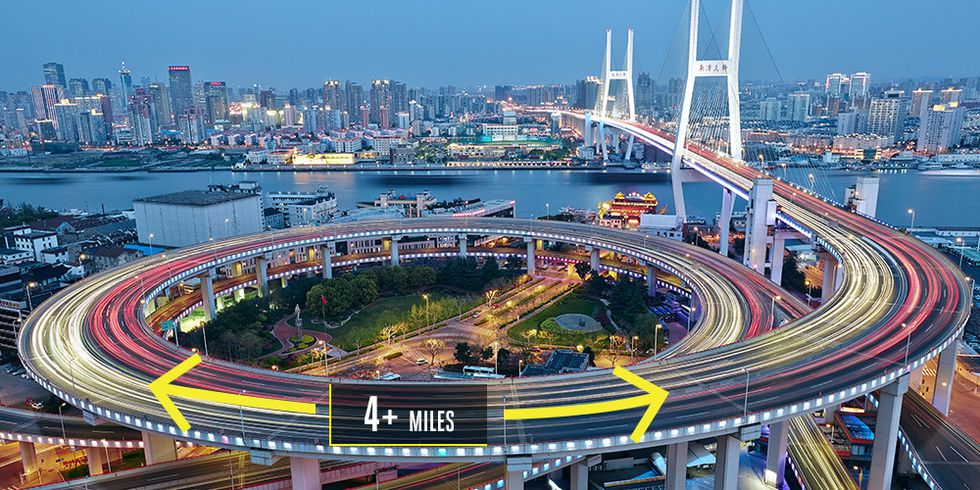
Shanghai, China
The Nanpu Bridge features an impressive seven-lane, 2,500-foot cable-stay component over the Huangpu River. But honestly, it’s the four miles of bridge that doesn’t cross the river that offers the most intrigue. A circular elevated approach stretches from land and wraps up, bringing vehicles to the height of the crossing in the midst of the heavily congested downtown Shanghai.
Tower Bridge
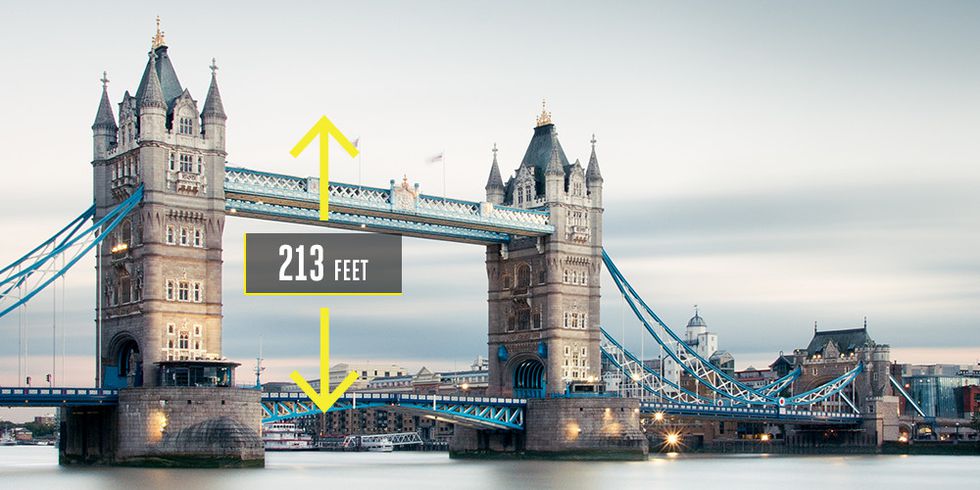
London, U.K.
Tower Bridge opened in 1894 on the east side of London after an eight-year project to construct a bridge across the Thames. It’s one bridge in two styles—suspension and bascule. The 213-foot-tall towers on either end of a 200-foot central lift span suspend the bridge to the shore on either side, while serving as the foundation for the bascule span that can raise and lower for ship traffic.
Capilano Cliffwalk
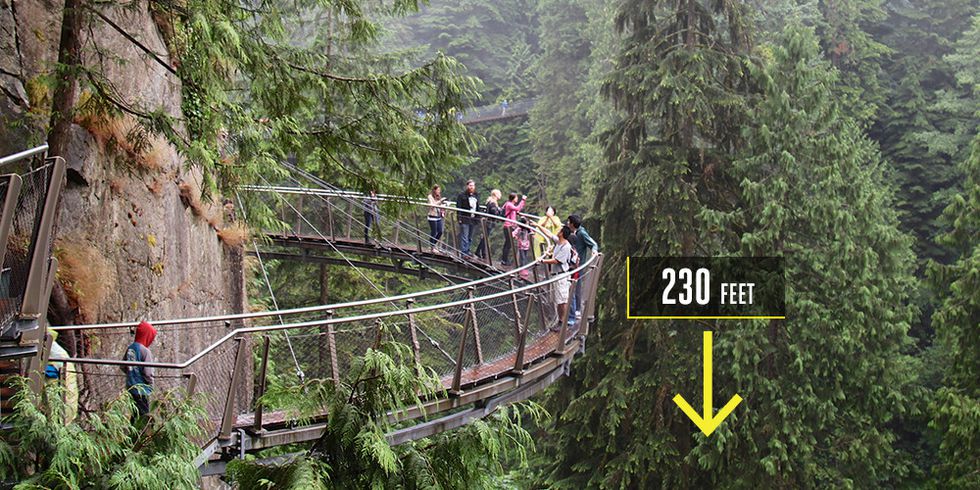
North Vancouver, British Columbia
Next door to the historic Capilano Suspension Bridge, the Cliffwalk opened in 2011 with 700 feet of bridge hanging off a cliff about 230 feet above a canyon. The bridge can handle 100,000 pounds of weight while anchored to the cliff’s walls. To make the natural Capilano River canyon even more impressive, sections of the Cliffwalk feature glass-bottom walkways. Not for the faint of heights.
Russky Bridge
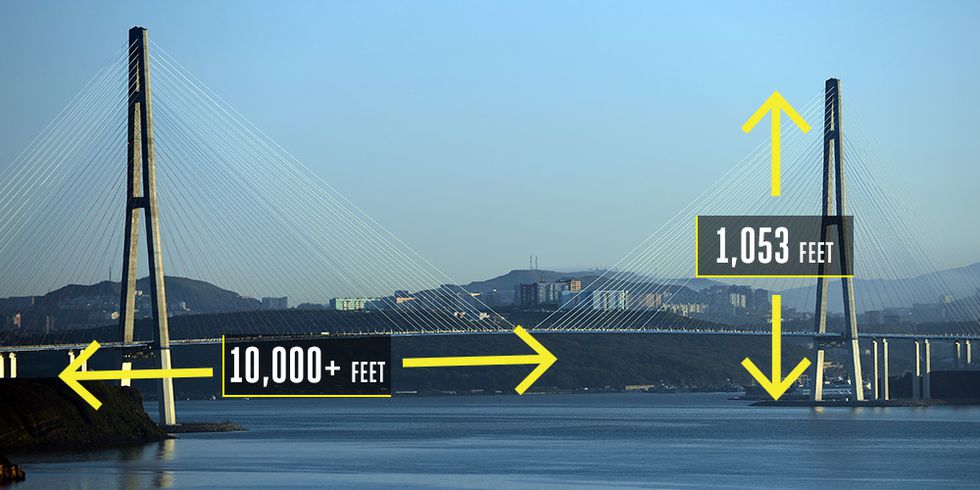
Russky Island, Russia
Completed in 2012, the 1,053-foot-tall structure became the world’s longest cable-stayed bridge at more than 10,000 feet long, and it has the second-highest pylons (following the Millau Viaduct) in the world. Just don’t plan on ever needing to cross the Russky Bridge in your lifetime—it’s located in a rural area of southeastern Russia near North Korea, China, and Japan.
Charles Bridge
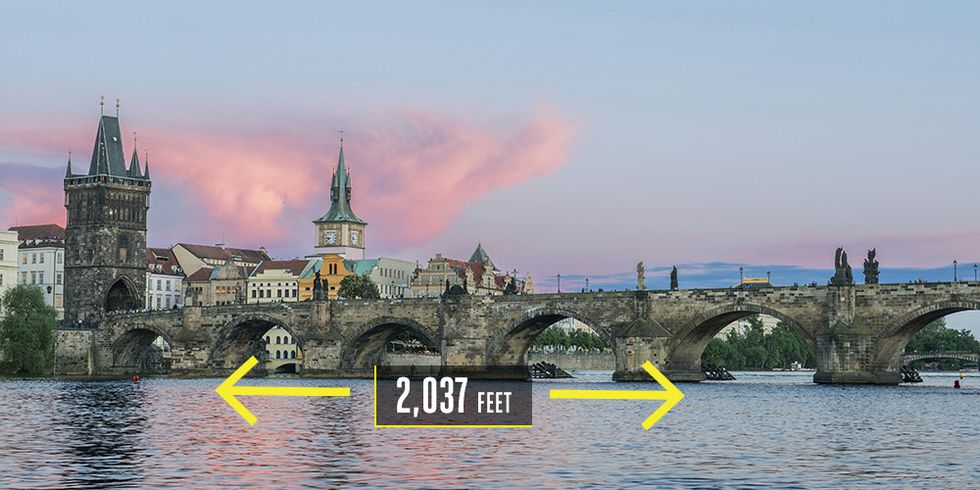
Prague, Czech Republic
Stone, old, and impressive. The Charles Bridge in Prague crosses the Vltava River in all its Gothic glory. What started in 1357 as a major construction project ended in the early 1400s with a 2,037-foot stone arch bridge connecting Old Town to the Prague Castle area in the Lesser Quarter with 16 arches and an additional 30 decorative statues.
Tilikum Crossing
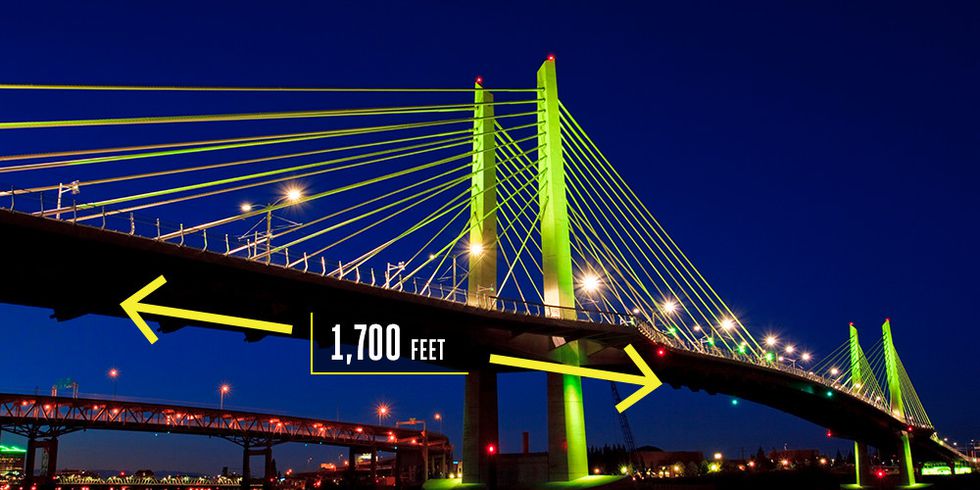
Portland, Oregon
The first new crossing over Portland’s Willamette River since 1973, 1,700-foot Tilikum Crossing opening in September 2015. The structure is remarkable not only for the slender design, with 110.5-foot towers that flow down to the five spans, but also because of what you won’t find on the bridge: cars. It’s not easy to build a big infrasturcture project in America, much less one that turns away drivers. But only light rail, streetcar, buses, pedestrians, and cyclists are welcome here.
Hangzhou Bay Bridge
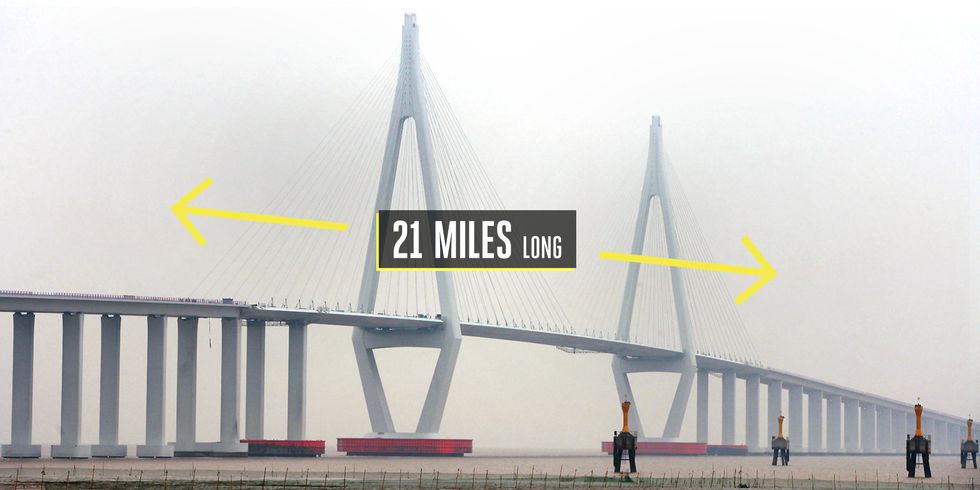
Jiaxing, China
Easily one of the longest trans-oceanic bridges in the world at over 21 miles, the Hangzhou Bay Bridge features cable-stayed sections while connecting Jiaxing and Ningbo across the Hangzhou Bay in eastern China. Opened in 2008, the bridge curves across the water in nine sections—two of them cable-stayed sections. The concrete and steel bridge includes a service center at roughly the midpoint, including a fuel station, restaurant, hotel, and conference center.
Slauerhoff Bridge
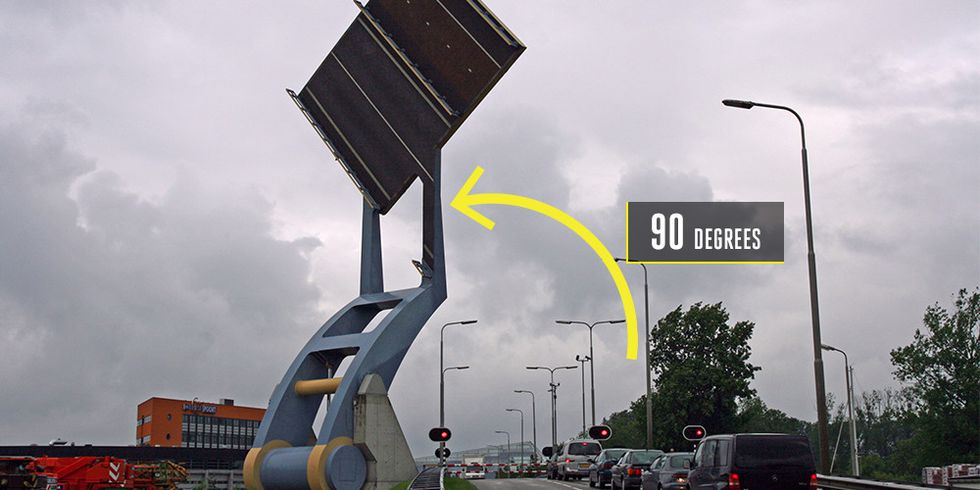
Leeuwarden, The Netherlands
Nicknamed the Flying Drawbridge, for obvious reasons, this small bascule bridge swings sections of 49 foot by 49 foot deck 90 degrees up into the air to allow ships to pass. Two arms swing from a pylon, instead of traditional hinges, for quicker movement.
The Confederation Bridge
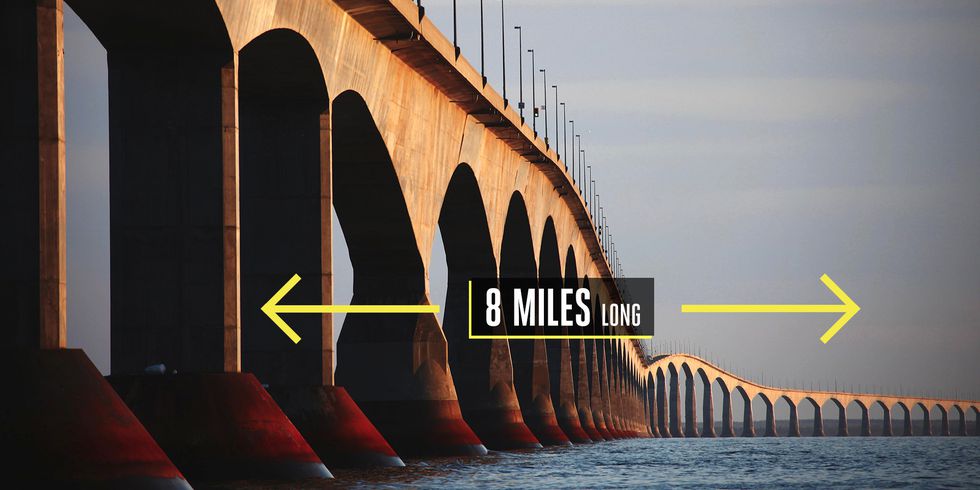
Borden-Carlton, Canada
At 8 miles in length, The Confederation Bridge linking Prince Edward Island with mainland New Brunswick on Canada’s east coast signifies the longest bridge over ice. Opened in 1997, the bridge doesn’t win too many aesthetic contests, but the concrete box girder structure comes robust to handle the wind, waves, and weather in the Abegweit Passage of Northumberland Strait. With 62 piers, The Confederation Bridge generally raises 131 feet above the water.
Gateshead Millennium Bridge
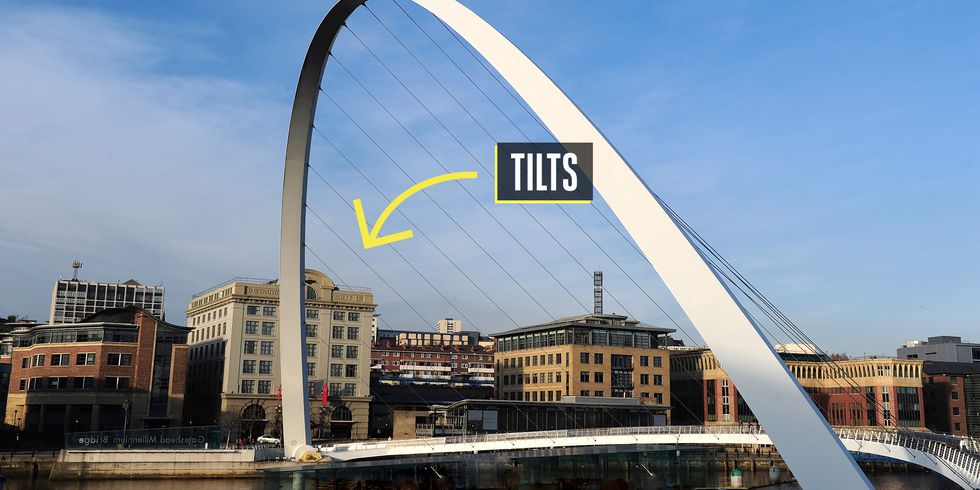
London, U.K.
Opened in 2002, this pedestrian bridge makes its mark by tilting. The curved structure spans the Tyne River and tilts to lower and raise in order to allow boat traffic past the bridge. Deemed the Winking Eye Bridge due to its shape, the 413-foot-long span was lowered in place in one piece by one of the world’s largest floating cranes.
Jiaozhou Bay Bridge
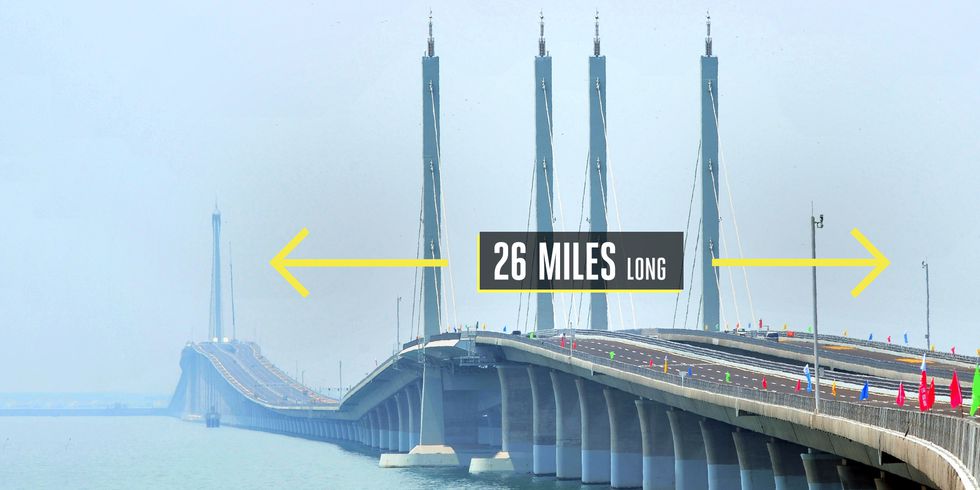
Qingdao, China
Opened in 2011, the Jiaozhou Bay Bridge in China still holds the record as the longest bridge over water at roughly 26 miles in total length. The combination self-anchored suspension bridge and cable-stayed bridge includes a T design, as one section of the bride that connects Qingdao and Huangdao breaks off to Huangdao Island. With steel and concrete designed to handle ship collisions, earthquakes and other weather-related catastrophe, the bridge includes over 5,000 concrete piles.
Lupu Bridge
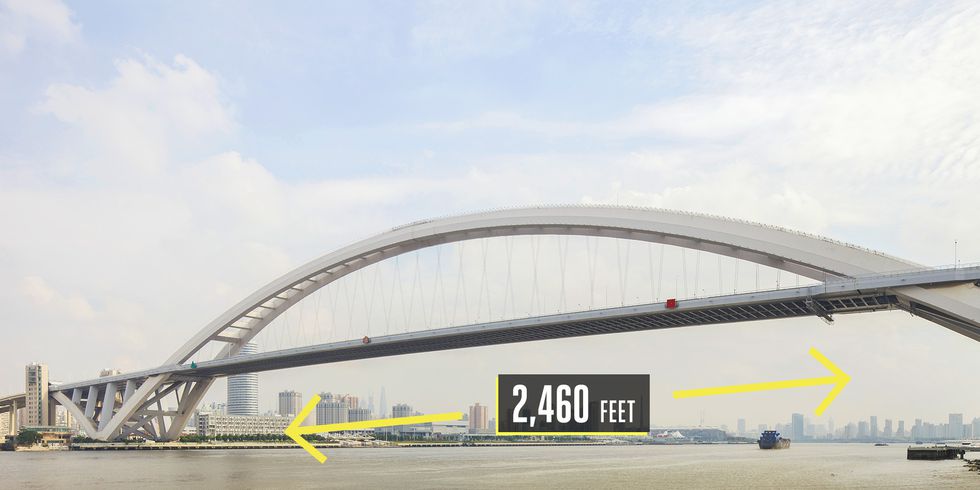
Shanghai, China
At roughly 2,460 feet in length, this steel-arch bridge signifies one of the longest of its type in the world while showing off its picturesque design adjacent to the former Expo 2010 site in Shanghai. Opened in 2003, the main span of 1,800 feet rises 105 feet over the Huangpu River and connects the Huangpu and Pudong districts. With six lanes of vehicle traffic and two pedestrian walkways, tourists can enjoy the span just as much as travelers.
Octavio Frias de Oliveira Bridge
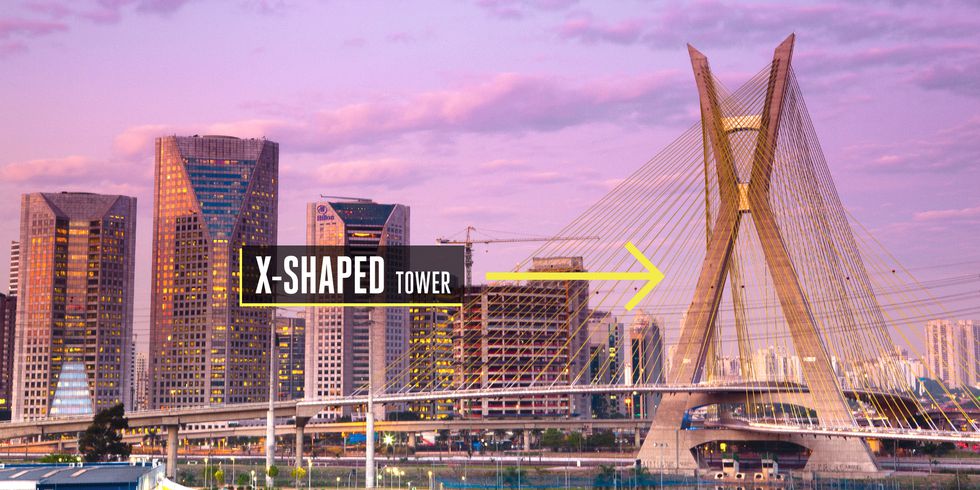
São Paulo, Brazil
It isn’t the size of the bridge in São Paulo, Brazil, that impresses, rather the shape of the 453-foot-tall bridge over the Pinheiros River. Opened in 2008, the X-shaped tower of the cable-stayed bridge includes two bridge decks crossing within the 250-foot-wide tower. The addition of lights on the cables add further intrigue to the design.
Royal Gorge Bridge
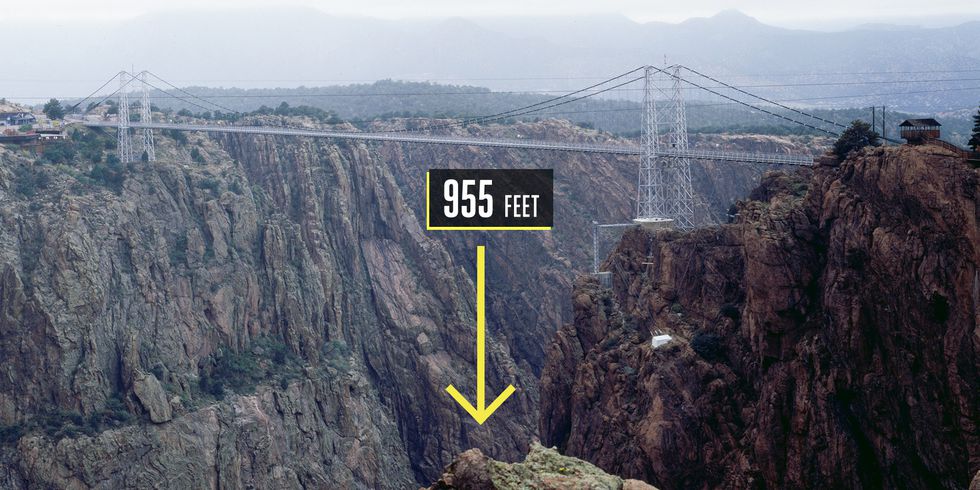
Cañon City, Colorado
The highest bridge in the Western Hemisphere, the Royal Gorge Bridge takes visitors 955 feet above the Arkansas River. The suspension bridge spans 880 feet between the towers with a total length of 1,260 feet. Opened in 1929, 1,292 wooden planks make up the largely pedestrian tourist attraction—passenger vehicles were permitted across the bridge at various times—to match attractions in the area that includes parachuting, a gondola, zip-lining near the bridge and even a Skycoaster to swing riders over the edge of the gorge.
Seri Wawasan Bridge
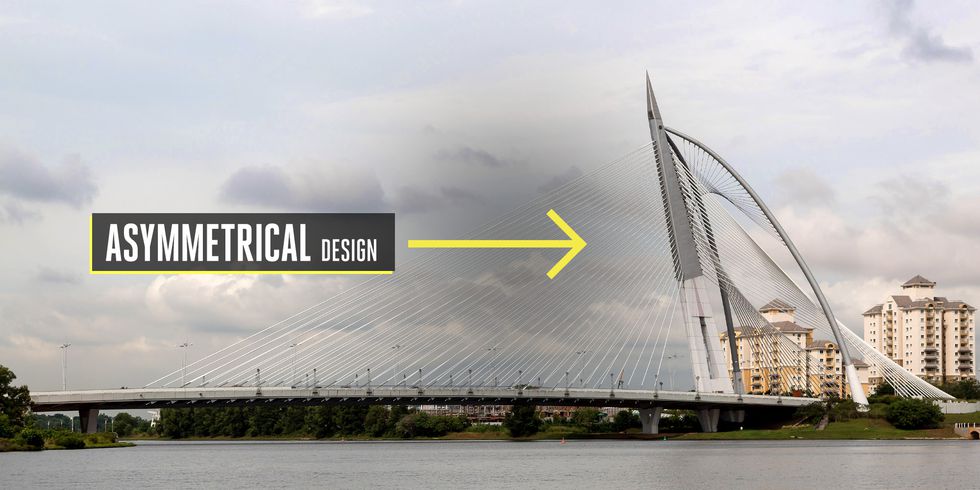
Putrajaya, Malaysia
Asymmetrical design wows at the Seri Wawasan Bridge over Putrajaya Lake in Malaysia. With an inverted-Y concrete-steel pylon rising 315 feet high on one end, the 790-foot-long bridge has as much aesthetic impressiveness as engineering intrigue. Opened in 2003, the pylon has the look of a sailing ship and lights up at night to add to the curved design.
Sunniberg Bridge, Switzerland
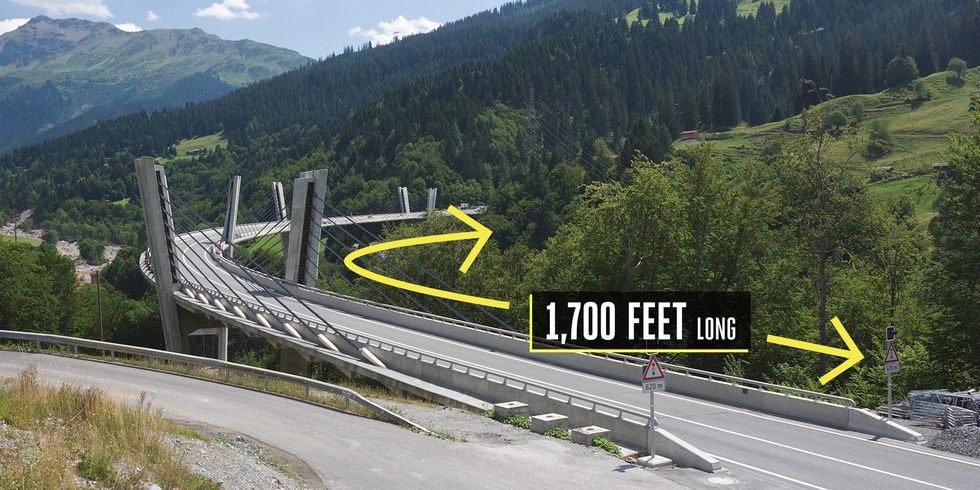
Klosters, Switzerland
This curved cable-stayed bridge won plenty of awards after opening in 1998 thanks to both the design and aesthetic that features what one award judge deemed “a delicate expression of structural art responding to a sensitive landscape.” Designed by Christian Menn, the 1,700-foot bridge curves through the valley with a unique Y-shaped support structure.
Szechenyi Chain Bridge
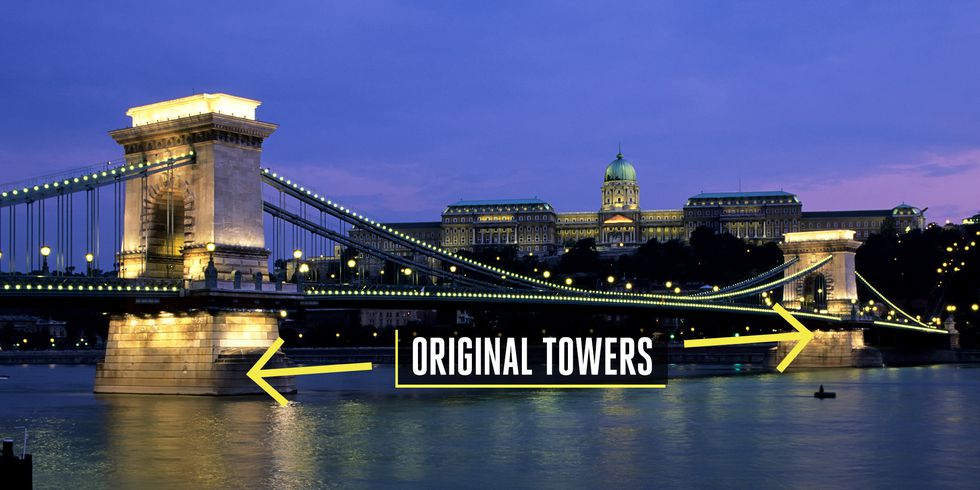
Budapest, Hungary
English engineer William Tierney Clark gave Budapest something to boast about when the Szechenyi Chain Bridge opened across the Danube in 1849. The suspension bridge impressed with cast iron and stone, one of the longest when it opened. While it suffered near total destruction at the hands of the German army in 1945, the towers of the bridge remained, allowing for reconstruction in 1949.
This feature is written by Tim Newcomb & originally appeared in Popular Mechanics.















